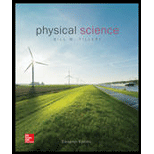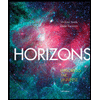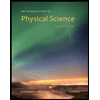
Physical Science
11th Edition
ISBN: 9780077862626
Author: Bill Tillery, Stephanie J. Slater, Timothy F. Slater
Publisher: McGraw-Hill Education
expand_more
expand_more
format_list_bulleted
Concept explainers
Textbook Question
Chapter 18, Problem 4PEB
What is the pressure, in N/m2, at the depth of the deepest mine?
Expert Solution & Answer
Want to see the full answer?
Check out a sample textbook solution
Students have asked these similar questions
What is the submarines maximum safe depth?
A mine of radius 25 cm and mass 10kg is thrown overboard into the ocean. The mine is attatched to a long chain with linear mass density 10kg/m. How high above the bottom of the ocean bed will the mine end up?
note: Please answer with most steps explained. Thank you!! :)
A mine of radius 25 cm and mass 10 kg is thrown overboard into the ocean. Themine is attached to a long chain with linear mass density 10 kg/m. How high above thebottom of the ocean bed will the mine end up?
Chapter 18 Solutions
Physical Science
Ch. 18 - 1. The core of Earth is composed of
a. iron and...Ch. 18 - 2. The middle part of Earth's interior is
a....Ch. 18 - 3. The separation of materials that gave Earth its...Ch. 18 - 4. A vibration that moves through any part of...Ch. 18 - 5. The S-wave is a
a. longitudinal wave.
b....Ch. 18 - 6. Waves that occur where S- or P-waves reach the...Ch. 18 - 7. The three main areas of Earth’s interior are
a....Ch. 18 - 8. The boundary between the crust and the mantle...Ch. 18 - 9. The mantle is composed of
a. sulfides.
b....Ch. 18 - 10. Seismological studies suggests that the...
Ch. 18 - 11. Evidence from meteorite studies proposes that...Ch. 18 - 12. The layer in Earth where seismic waves sharply...Ch. 18 - 13. The layer that is broken up into plates that...Ch. 18 - 14. The name of the single large continent...Ch. 18 - 15. Records of the strength and directions of...Ch. 18 - 16. The chain of mountains found in the center of...Ch. 18 - 17. Long, deep, and narrow oceanic trenches are...Ch. 18 - 18. The theory that the lithosphere is composed of...Ch. 18 - 19. The plate boundary associated with the...Ch. 18 - 20. The movement of one plate under another plate...Ch. 18 - 21. Transform boundaries occur when
a. two plates...Ch. 18 - 22. What is the current theory about why the...Ch. 18 - 23. The seismic waves that cause the most damage...Ch. 18 - 24. Earth’s mantle has a chemical composition that...Ch. 18 - 25. From seismological data, Earth’s shadow zone...Ch. 18 - 26. The Mohorovicic discontinuity is a change in...Ch. 18 - 27. The oldest rocks are found in
a. continental...Ch. 18 - 28. The least dense rocks are found in
a....Ch. 18 - 29. The idea of seafloor spreading along the...Ch. 18 - 30. According to the plate tectonics theory,...Ch. 18 - 31. The presence of an oceanic trench, a chain of...Ch. 18 - 32. The presence of an oceanic trench with shallow...Ch. 18 - 33. The ongoing occurrence of earthquakes without...Ch. 18 - 34. The evidence that Earth's core is part liquid...Ch. 18 - 35. The surfaces of early planets in our solar...Ch. 18 - 36. The early Earth’s core is thought to have...Ch. 18 - 37. Indirect evidence that supports the theory of...Ch. 18 - 38. The oceanic crust is
a. thicker than the...Ch. 18 - 39. Seismic waves that do not travel through...Ch. 18 - 40. The fastest seismic wave is the
a. P-wave.
b....Ch. 18 - 41. Information about the composition and nature...Ch. 18 - 42. Primary information about the nature of the...Ch. 18 - 43. The asthenosphere is not defined as
a....Ch. 18 - 44. Earth’s magnetic field is thought to be...Ch. 18 - 45. Studies of the Mid-Atlantic Ridge provided...Ch. 18 - 46. Evidence that supports seafloor spreading does...Ch. 18 - 47. A geologic feature that was produced by...Ch. 18 - 48. Which type of plate boundary accounts for the...Ch. 18 - 49. Which type of plate boundary was responsible...Ch. 18 - 50. A famous transform boundary in the United...Ch. 18 - 51. Plate movement is measured by
a. reflected...Ch. 18 - 52. Islands that form when melted subducted...Ch. 18 - 1. Describe one theory of how Earth came to have a...Ch. 18 - 2. Briefly describe the internal composition and...Ch. 18 - 3. What is the asthenosphere? Why is it important...Ch. 18 - 4. Describe the parts of Earth included in the (a)...Ch. 18 - 5. What is continental drift? How is it different...Ch. 18 - 6. Rocks, sediments, and fossils around an oceanic...Ch. 18 - 7. Describe the origin of the magnetic strip...Ch. 18 - 8. Explain why ancient rocks are not found on the...Ch. 18 - 9. Describe the three major types of plate...Ch. 18 - 10. What is an island arc? Where are they found?...Ch. 18 -
11. Briefly describe a model that explains how...Ch. 18 - 12. Briefly describe the theory of plate tectonics...Ch. 18 - 13. What is an oceanic trench? What is the...Ch. 18 - 14. Describe the probable source of all the...Ch. 18 - 15. The northwestern coast of the United States...Ch. 18 - 16. Explain how the crust of Earth is involved in...Ch. 18 - 1. Why are there no active volcanoes in the...Ch. 18 - 2. Describe cycles that occur on Earth's surface...Ch. 18 - 3. Discuss evidence that would explain why plate...Ch. 18 - 4. Analyze why you would expect most earthquakes...Ch. 18 - 1. The rate at which the temperature increases...Ch. 18 - 2. Based on a geothermal gradient of 15°C/km, what...Ch. 18 - Prob. 3PEBCh. 18 - 4. What is the pressure, in N/m2, at the depth of...Ch. 18 - 5. What is the pressure, in N/m2, at a depth of 75...Ch. 18 - 6. What is the pressure, in N/m2, at the base of...Ch. 18 - 7. Wood floating in water can demonstrate how the...Ch. 18 - 8. A teacher would like to demonstrate the...Ch. 18 - 9. A survey of a mid-oceanic ridge determined the...Ch. 18 - 10. GPS stations on two separate plates have...Ch. 18 - 11. What is the geothermal gradient along a...Ch. 18 - 12. What are the subduction direction and slope of...Ch. 18 - 13. What are the subduction direction and slope,...Ch. 18 - 14. Earthquake data from a subduction zone are...Ch. 18 - 15. The North American Plate is moving west at a...
Additional Science Textbook Solutions
Find more solutions based on key concepts
What discovery in the 15th century greatly advanced progress in science?
Conceptual Physical Science Explorations
GO You testify as an expert witness in a case involving an accident in which car A slid into the rear of car B,...
Fundamentals of Physics Extended
Why doesnt Earths rotation provide a suitable time standard?
Essential University Physics (3rd Edition)
How would Figure 10.13 change if the temperature of the gas were increased? FIGURE 10.13 The Maxwell velocity d...
MODERN PHYSICS (LOOSELEAF)
Scientific Method.
Glencoe Physics: Principles and Problems, Student Edition
Whether two metal foil leaves an electroscope get opposite charge when the electroscope is charged.
Physics of Everyday Phenomena
Knowledge Booster
Learn more about
Need a deep-dive on the concept behind this application? Look no further. Learn more about this topic, physics and related others by exploring similar questions and additional content below.Similar questions
- Make a list of what image faults one may encounter in radiology and list what the reason for this fault in image quality is. List solutions for each image fault also. An example of the chart structure is listed below.arrow_forwardWhat is the height of table top?arrow_forwardHow does physics apply to these geological processes (volcanic eruptions, mountain formation, deposition)? Please explain.arrow_forward
- A strong R = 6.2 magnitude earthquake struck off a group of islands, where R is the Richter number. Its intensity is of the form I=aR. Find a. (Enter an exact number.)arrow_forwardThe Ocean's level is rising about 1.5 millimeters (mm) per year. At this rate, in how many years will the sea level be 3 m higher than it is now? You must include a SKETCH to solve.arrow_forwardIf an earthquake measures 7.9 on the Richter Scale, what is the intensity of this earthquake, relative to a 0-level earthquake? Round off your answer to the nearest integer.arrow_forward
- Describe the various velocities used in seismic prospecting. Which one is used for stacking of data with its explanations?arrow_forwardThe intensity of an earthquake wave passing through the Earth is measured to be 2.0×106 J/(m2⋅s)J/(m2⋅s) at a distance of 58 kmkm from the sourceAt what rate did energy pass through an area of 5.0 m2m2 at 2.0 kmkm ?arrow_forwardWhat is the no-slip condition? What causes it?arrow_forward
- Un objeto de 1500 grs, se eleva 1.83 mts. ¿cuánto trabajo efectúa contra la gravedad de la tierra, repita estemismo problema si el objeto baja en lugar de elevarsearrow_forwardTrue or False 1. If a well is drilled into a confined aquifer, the water can rise above its level in the aquifer because of the extra hydrostatic (fluid) pressure; which is called an artesian system. The water in an artesian system will rise all the way to the ground surface. 2. In areas suffered from surface subsidence, solutions such as pumping water back underground are likely to work.arrow_forwardWhat fraction of the iceberg lies below the water level?arrow_forward
arrow_back_ios
SEE MORE QUESTIONS
arrow_forward_ios
Recommended textbooks for you
 Horizons: Exploring the Universe (MindTap Course ...PhysicsISBN:9781305960961Author:Michael A. Seeds, Dana BackmanPublisher:Cengage Learning
Horizons: Exploring the Universe (MindTap Course ...PhysicsISBN:9781305960961Author:Michael A. Seeds, Dana BackmanPublisher:Cengage Learning An Introduction to Physical SciencePhysicsISBN:9781305079137Author:James Shipman, Jerry D. Wilson, Charles A. Higgins, Omar TorresPublisher:Cengage Learning
An Introduction to Physical SciencePhysicsISBN:9781305079137Author:James Shipman, Jerry D. Wilson, Charles A. Higgins, Omar TorresPublisher:Cengage Learning

Horizons: Exploring the Universe (MindTap Course ...
Physics
ISBN:9781305960961
Author:Michael A. Seeds, Dana Backman
Publisher:Cengage Learning

An Introduction to Physical Science
Physics
ISBN:9781305079137
Author:James Shipman, Jerry D. Wilson, Charles A. Higgins, Omar Torres
Publisher:Cengage Learning
General Relativity: The Curvature of Spacetime; Author: Professor Dave Explains;https://www.youtube.com/watch?v=R7V3koyL7Mc;License: Standard YouTube License, CC-BY